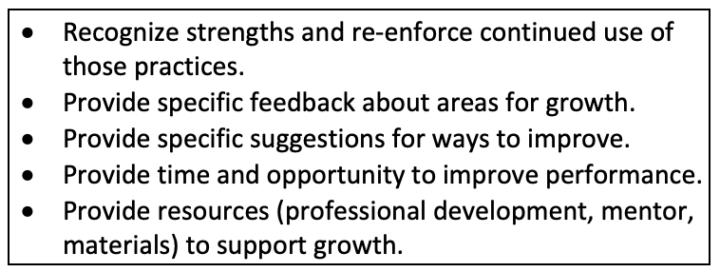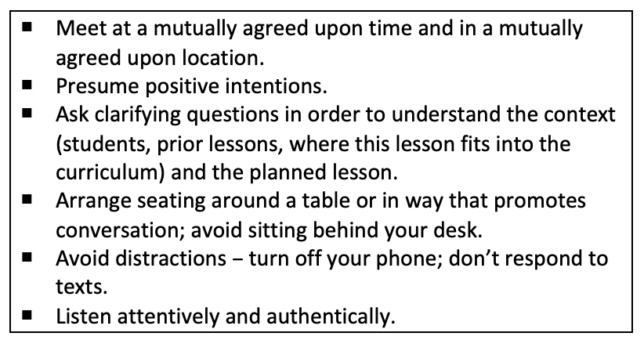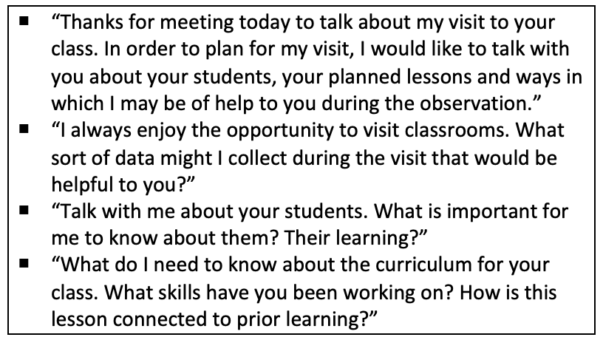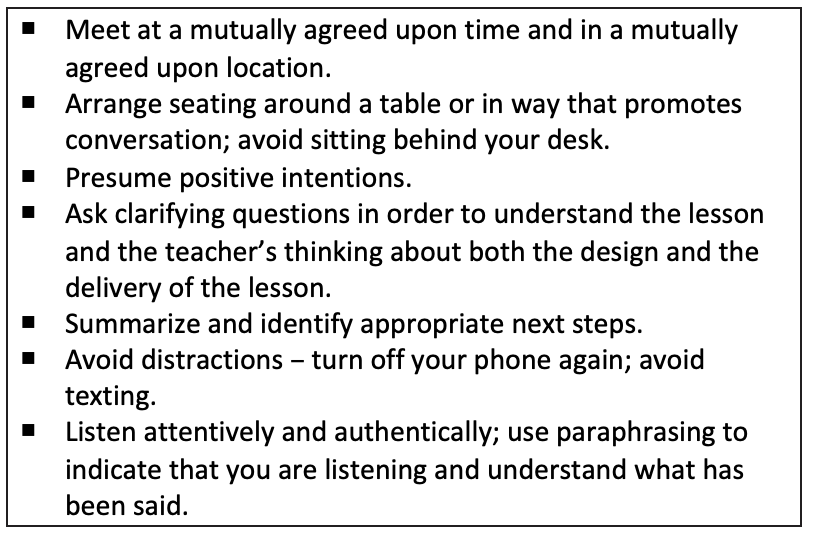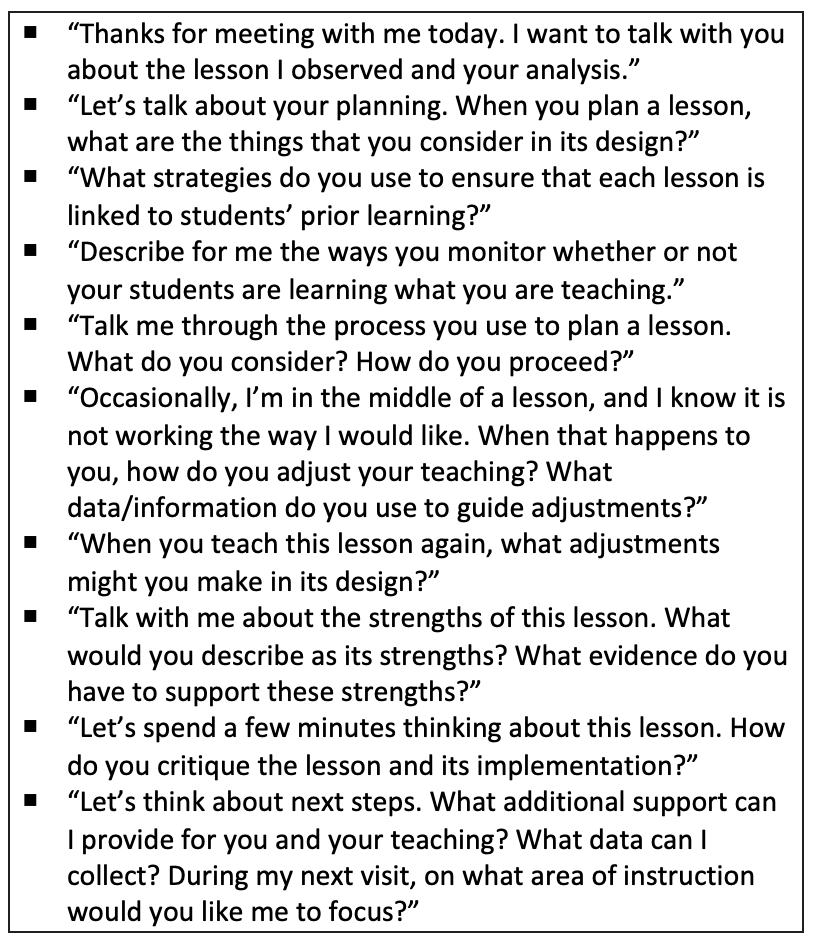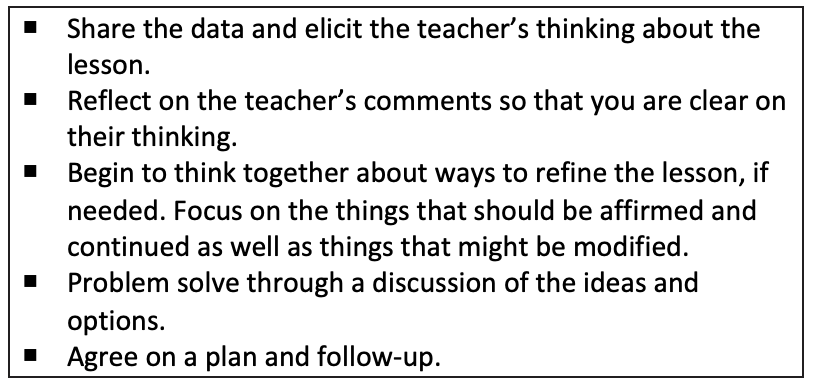Teacher Evaluation That Works for Everyone
By Ronald Williamson and Barbara R. Blackburn
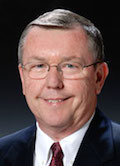
Evaluating teachers and other staff is a major job of every principal, one of the most important. Evaluation is guided by state and local policies and procedures but can become a powerful tool for professional development and teacher growth.
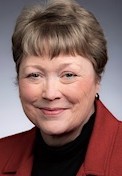
Beliefs About Teacher Evaluation as a Tool for Improvement
Evaluation should be used as a tool to improve teacher performance and be guided by clear beliefs.
Most evaluation systems consist of three steps – a planning or pre-observation conference, followed by an observation and then a post-observation conference. We like this model because it is collaborative, provides an opportunity to gather data prior to the observation, and allows for analysis, reflection and discussion following the observation.
1. The Planning Conference
A planning or pre-observation conference is a key component of effective evaluation systems. Too often overlooked, it provides an opportunity for the teacher and administrator to meet and share information about prior learning, students in the class, and general contextual information about the classroom. It also provides an opportunity for the teacher to suggest areas of focus or emphasis during the observation.
These conversations build trust and a strong foundation for the post-observation conference. They also re-enforce that evaluation is a collaborative process and that the teacher’s voice is important and respected.
The best evaluation systems are built on the premise that teachers can analyze and reflect on their own teaching. It is important to invite teachers to suggest data that the principal might collect about the lesson. For example, a teacher might want data about the distribution of response opportunities during the lesson and the principal could chart that data as part of the observation.
Here are some important “Do’s” that make a planning conference successful:
Discussion prompts like these promote productive conversation during the planning conference as you gather information about the lesson and the students.
These prompts, and others in this article, are just suggestions. They should always be modified for each teacher and will vary based on content area, grade level, or experience level of the teacher. The goal is to make prompts welcoming and focused on gathering data that will inform the observation.
The key outcomes of the planning conference:
 2. The Observation
2. The Observation
The observation builds on the planning conference, and the administrator gathers data about the focus area agreed to during the planning conference. Teachers should always be familiar with the tool you use to gather data, whether it is one proscribed by your district or one you’ve developed. It’s common to gather data on an digital device and then use that later to guide the post-observation conference and prepare any evaluation documents.
Your goal is for the teacher to be comfortable with the tool used during the observation visit. At the end of the observation, verify the meeting time and location for your post-observation conference, begin to analyze the data, and think about the questions that you will use during the follow-up conference to elicit teacher reflection and thinking about their lesson.
Here are the key outcomes of the observation:
3. The Post-Observation Conference
The post-observation conference is the linchpin of an effective evaluation system. It should be built around analysis of the lesson, with the teacher an equal partner in the analysis.
Much like the planning conference, the post-observation conference is most successful when both participants are comfortable and have time to engage in a thoughtful conversation. It’s a time for both teacher and administrator to reflect on the lesson and to discuss next steps. Often it is an opportunity to re-enforce really good instructional methods and to encourage their continued use.
Here are some important “Do’s” that make a post-observation conference successful:
The goal is to provide an opportunity for the teacher to reflect on the data collected in the focus area and for the teacher to analyze and think about their teaching. The meeting should conclude with a plan for follow-up or next steps, including a review of any required evaluation documents.
Discussion prompts like these encourage a supportive, action-oriented exchange during the post-observation conference.
Just like the planning conference you should select and modify the prompts to fit the teacher, the lesson, the content area and/or their experience level.
It is easy to shortcut this aspect of the process, particularly with stronger or more experienced teachers, but it is a critical part of the reflective process and key to teacher growth. Often your most skilled teachers are most interested in an opportunity to reflect on their teaching and consider ways to continue to grow professionally.
Here are the key outcomes of the post-observation conference:
A final note about teacher evaluation
Evaluating teachers is a requirement of every principal. This requirement can be used as a tool to support teacher growth. Using a three-step evaluation process models the importance of analysis and reflection on one’s teaching. We encourage all principals to balance the procedural demands with a focus on teacher growth and improvement.
References
Williamson, R & Blackburn, B. (2024). Improving Teacher Morale and Motivation. New York: Routledge/Eye On Education.
Williamson, R. & Blackburn, B. (2016). The Principalship from A to Z. New York: Routledge/Eye On Education.
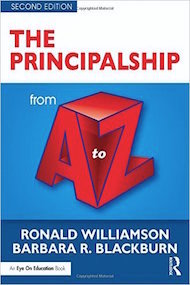
Dr. Barbara R. Blackburn, a “Top 10 Global Guru in Education,” is a bestselling author of over 30 books and a sought-after consultant. She was an award-winning professor at Winthrop University and has taught students of all ages. In addition to speaking at conferences worldwide, she regularly presents virtual and on-site workshops for teachers and administrators. Barbara is the author of Scaffolding for Success (Routledge/Eye On Education, 2025) and many other books and articles about teaching and leadership. Visit her website and see some of her most popular MiddleWeb articles about effective teaching here.

